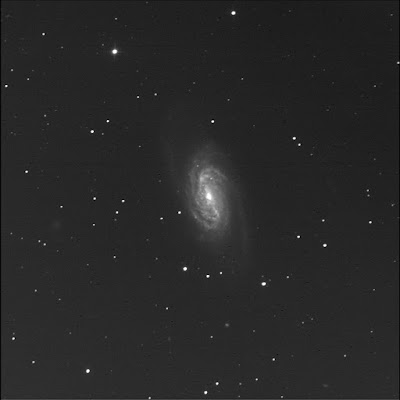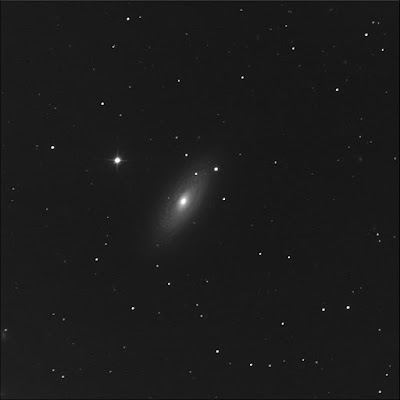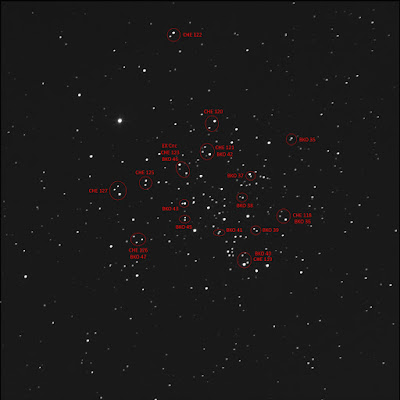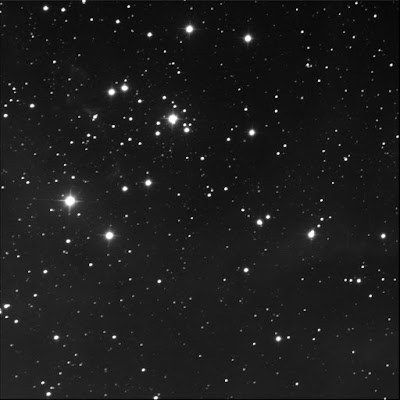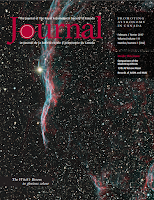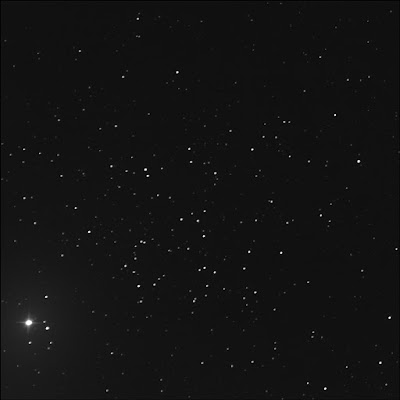I continue to acquire images of the RASC Finest NGCs. The Rosette Nebula, NGC 2237, is one of them. But the Rosette is huge! To capture it all would take at least 9 panels with the Burke-Gaffney robot. I didn't feel like doing that (again). Instead, I considered centering on an interesting feature, perhaps some of the pillars...
When the Moon brightened, I thought that Monoceros nebula would be dimmed so put it aside. But then I realised the open cluster within, in the centre of the vast structure, could be easily imaged in a bright sky. So I selected NGC 2244 (aka Caldwell 50) as my target and specifically centered on the star GSC 00154 02417. It also harbours some multi-star systems...
Luminance only, 30 seconds subexposures, 10 stacked shots. FITS Liberator, Paint.NET. North is up; east is left.
Hints of the H-II region nebula are visible because I cranked the stretching. But that's blowing out the bright stars and merging some of the companions.
Multi-star system HD 46150 is just north of centre. There are 10 identified stars according to SkyTools 3 Pro. A, B, C, D, and E are all merged together. The southward lobe is E; the westward bump is D. F is due north. G and H form a triangle with HD 259105 to the south-south-west of 46150. J is to the south-south-east and further along is K to the south-east.
Double HD 259012 is to the south-west of centre. A and B are merged. [ed: Er. No. B is well away from HD 259012 A. In fact, HD 259012 B is the G star of HD 46150! Also known as BAL 2999.]
Beyond is the cool quad of HD 46056 with the four stars in a line angle up to the north-west.
Near the bottom-left corner of the frame is HD 259332. Unfortunately, the C star is cut-off. There's something interesting going on with the stars immediately to the north too.
Triple HD 46180 is visible to the east-north-east of 46150. A and B are merged; C is just visible above the peanut.
§
On viewing a revised image with a lower brightness setting, many companions emerged as separate stars. This included HD 46150 D and E, HD 259012 A and B, and HD 46180 A and B.
Also, a point appeared to the north-east. HD 46150 B? If so, it moved!
Neat.
§
Discovered in SkyTools I had this NGC in my View Again list. I think I can remove it now.
§
The Rosette Nebula itself is referred to in Sir Moore's catalogue as Caldwell 49.
§
Reshot HD 46150 (faster) on
11 Nov '17. Successfully split more stars.
§
Wikipedia link:
NGC 2244.


